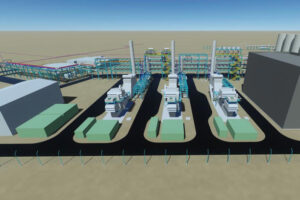European wind farms could power world until 2050
If Europe maximised land for onshore wind farms, it could produce 100 times more renewable energy and supply enough electricity for the whole world until 2050.
This is the conclusion of researchers from the University of Sussex and Aarhus University who used spatial analysis of Geographical Information System (GIS)-based wind atlases to identify around 46% of Europe’s territory which would be suitable for building onshore wind farms.
They say this type of study provided a far more detailed insight than previous studies because they could factor in a far greater range of exclusionary factors including houses, roads, restricted areas due to military or political reasons as well as terrains not suitable for wind power generation.
The study reveals that if all of Europe’s capacity for onshore wind farms was realised, the installed nameplate capacity would 52.5 TW – equivalent to 1 MW for every 16 European citizens.
The authors identified Turkey, Russia, and Norway as having the greatest potential for future wind power density although large parts of Western Europe were also considered ripe for further onshore farms because of favourable wind speeds and flat areas.
Co-author Benjamin Sovacool, Professor of Energy Policy at the University of Sussex, said: ‘The study is not a blueprint for development but a guide for policymakers indicating the potential of how much more can be done and where the prime opportunities exist.
“Our study suggests that the horizon is bright for the onshore wind sector and that European aspirations for a 100% renewable energy grid are within our collective grasp technologically.
‘Obviously, we are not saying that we should install turbines in all the identified sites but the study does show the huge wind power potential right across Europe which needs to be harnessed if we’re to avert a climate catastrophe.’
Yesterday, Environment Journal reported on a study that found published in Scientific Reports, that found that global electric energy demands could be met if just 1% of agricultural land was converted to solar panels.
Photo Credit – Pixabay















